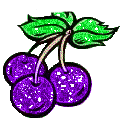1.The first step is to create batik designs commonly called molani. In determining the motive, usually each person has different tastes. Some prefer to make their own motives, but others prefer to follow the general motives that already exist. Motifs are often used in Indonesia itself is divided into 2 batik: batik classic, a lot of playing with the symbols, and coastal batik with natural characteristics such as pictures of flowers and butterflies. Create a design or motif can use a pencil.
2.After completing the molani, the second step is to paint with (wax) night using a canting (dikandangi / dicantangi) by following the pattern.
3.The next stage, covered with candle night parts will remain white (no color). Canting to the fine, or brush to a large part. The goal is that when dyeing the material into the dye solution, the wax layer is not exposed.
4.The next phase, the first coloring process on the part that is not covered by the wax with a cloth dipped in a certain color.
5.Once dyed, the fabric is in drying and dried.
6.Once dry, re-do the process of painting with wax batik using canting to cover evening section will be maintained in the first staining.
7.Then, proceed with the second color dyeing process.
8.The next process, removing wax from the cloth night by putting the cloth with hot water on the stove.
9.After a clean cloth from wax and dried, can be re-closure process of batik with wax (using a canting) to hold the first and second color.
10.The process of opening and closing night candles can be performed repeatedly in accordance with the number of colors and complexity of the desired motif.
11.The next process is nglorot, where the fabric has changed the color of boiled hot water. The goal is to eliminate a layer of wax, so the motive which has previously drawn clearly visible. You do not need to worry, this immersion will not make your motives have been exposed to color images, as part of the fabric is still shrouded in a thin layer (wax is not completely washed out). Once completed, the batik is ready for use.
12.The last process is to wash the batik cloth and then dry with a drying before it can be used and worn.
the stages in the process of batik pembutan this
Diposting oleh
Dwi Prasetyo W
on Sabtu, 21 Mei 2011







0 komentar:
Posting Komentar